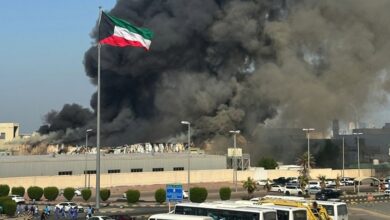Rooftop solar on 3,220 government buildings cuts electricity use by 25%
Government buildings in Kuwait, such as schools, mosques, and health centers, each covering at least 600 square meters, collectively offer about 1.5 million square meters of potential space for solar panels.

-
Renewable energy stands out as one of the best solutions for providing electricity in Kuwait, which enjoys bright sunshine almost all year round, and it can be used to generate electricity to support the electricity grid with clean energy.
-
The Ministry of Education has installed photovoltaic power stations in several schools, with the latest at Mowdi Burjas Al-Sour School, featuring 474 panels producing up to 312 kilowatt-hours and meeting 20% of the school’s electricity needs.
The recent electricity crisis in Kuwait has sparked renewed interest in government proposals and initiatives aimed at harnessing solar energy from the rooftops of government buildings to generate electricity. These proposals have been discussed over the past few years, but their implementation remains limited.
According to a report by Al-Jarida newspaper, these initiatives could help alleviate the growing energy consumption issues that have been causing recurrent power outages.
Kuwait boasts approximately 3,220 government buildings, including schools, mosques, and health centers, each covering at least 600 square meters. This totals around 1.5 million square meters of potential solar panel space. Experts estimate that implementing solar panels on these buildings could reduce government energy consumption by up to 25%.
While the Ministry of Electricity, Water, and Renewable Energy continues its efforts to confront the crisis of electrical loads during peak periods in a summer that has been described as the hottest in recent years, and while solutions are being sought through the Gulf interconnection network to support the electrical network with part of the surplus electricity from GCC countries, multiple questions are being raised regarding possible solutions that can be implemented to contribute to solving the crisis, even partially.
Renewable energy stands out as one of the best solutions for providing electricity in Kuwait, which enjoys bright sunshine almost all year round, and it can be used to generate electricity to support the electricity grid with clean energy.
The Shagaya Renewable Energy Plant project is perhaps the most prominent government project implemented by the Kuwait Institute for Scientific Research in cooperation with the Ministry of Electricity in the Shagaya area, covering an area of 87 square kilometers.
The first phase of this station has been implemented and includes three projects for electricity generation. The first produces 50 megawatts through thermal heating using sunlight, the second produces ten megawatts through wind energy, and the third involves photovoltaic panels producing ten megawatts.
These three projects occupy only four square kilometers of the station’s land, leaving 83 square kilometers for the remaining phases of the project, which is expected to have a total production capacity exceeding 3,000 megawatts in its final phase.
However, the question arises: why are the roofs of government buildings such as schools, mosques, and health centers not utilized as mini-stations to generate electricity through photovoltaic panels? These panels could be installed on these roofs to generate energy for these buildings.
Perhaps the power outage crisis that occurred on June 20 due to high loads, and the initiatives taken by some government agencies to reduce them, provided compelling evidence of the importance of utilizing building roofs to address such problems.
For instance, the Ministry of Education took the initiative to advance teachers’ holidays to close schools and conserve electricity, which somewhat alleviated the crisis. Looking at government buildings, there are 1,275 government schools, 1,823 mosques under endowment, and 122 health centers, in addition to other government buildings such as ministries, agencies, and hospitals. This makes the roofs of these buildings substantial areas that can be used to operate photovoltaic stations for electricity generation.
By a simple calculation, if each building could provide 600 square meters for installing panels, we would have approximately 1.5 million square meters that could collectively serve as power generation stations, providing no less than 25 percent of the electricity consumption for these buildings. This would consequently contribute to 25 percent of the total electricity consumption of the public grid.
The Ministry of Education has already installed photovoltaic power stations in several schools, some in collaboration with the Research Institute and others through independent projects.
The most recent installation was at Mowdi Burjas Al-Sour School, equipped with 474 panels capable of producing up to 312 kilowatt-hours, and integrated with a modern electronic management system to connect it to the government electricity grid, fulfilling 20 percent of the school’s total electricity needs through solar power.
Shagaya plant saves over 12 million barrels of oil
The Shagaya Renewable Energy Plant project saves more than 12 million barrels of oil that would have been burned to produce the same amount of electricity, in addition to preventing more than five million tons of carbon dioxide emissions from power plants.












